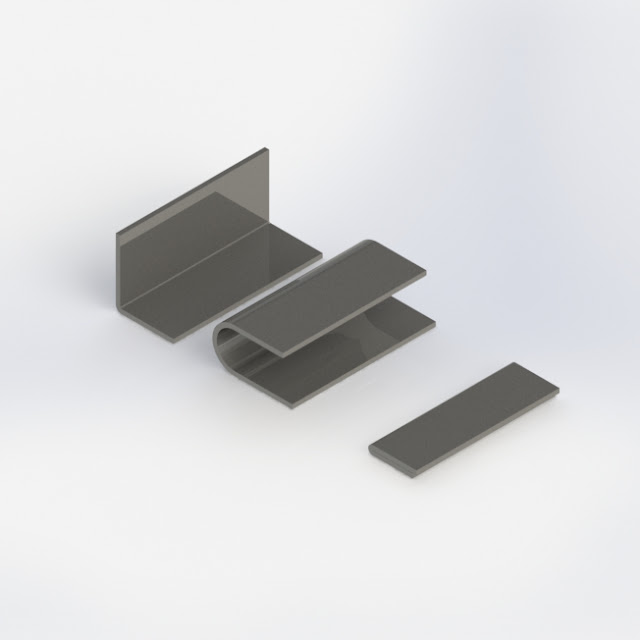ABOUT SHEET METAL BENDING (MECHANICAL, DESIGN, SOLID-WORKS)
SHEET METAL BOX
Sheet metal forming is a process in which force is applied to sheet metal par to get desired shape. The force applied to the material is beyond yield strength to deform plastically.
Bending
Bending is a metal forming process in which force is applied to a material, causing it to bend at some angle to get desired shape.
Bending is a metal forming process in which force is applied to a material, causing it to bend at some angle to get desired shape.
Type of bend
Hem
Choosing this type adds a bend with a 180-degree angle and an inside bend radius of 0.Seam
Choosing this type adds a bend with a 180-degree angle and a radius of half the sheet thickness.Bend
Choosing this type adds a bend with a 90-degree angle, using the specified bend radius for the part.
IMPORTANT FACTORS
Neutral axis - The location in the sheet that is neither stretched nor compressed, and therefore remains at a constant length.
K-factor - The location of the neutral axis in the material, calculated as the ratio of the distance of the neutral axis (measured from the inside bend surface) to the material thickness. The K-factor is dependent upon several factors (material, bending operation, bend angle, etc.) and is typically greater than 0.25, but cannot exceed 0.50.
Bend allowance - The length of the neutral axis between the bend lines, or in other words, the arc length of the bend. The bend allowance added to the flange lengths is equal to the total flat length.
Bend deduction - Also called the bend compensation, the amount a piece of material has been stretched by bending. The value equals the
difference between the mould line lengths and the total flat length

Great work Pankaj keep it up
ReplyDeleteNicee
ReplyDeleteAwesome work sir .....
ReplyDelete